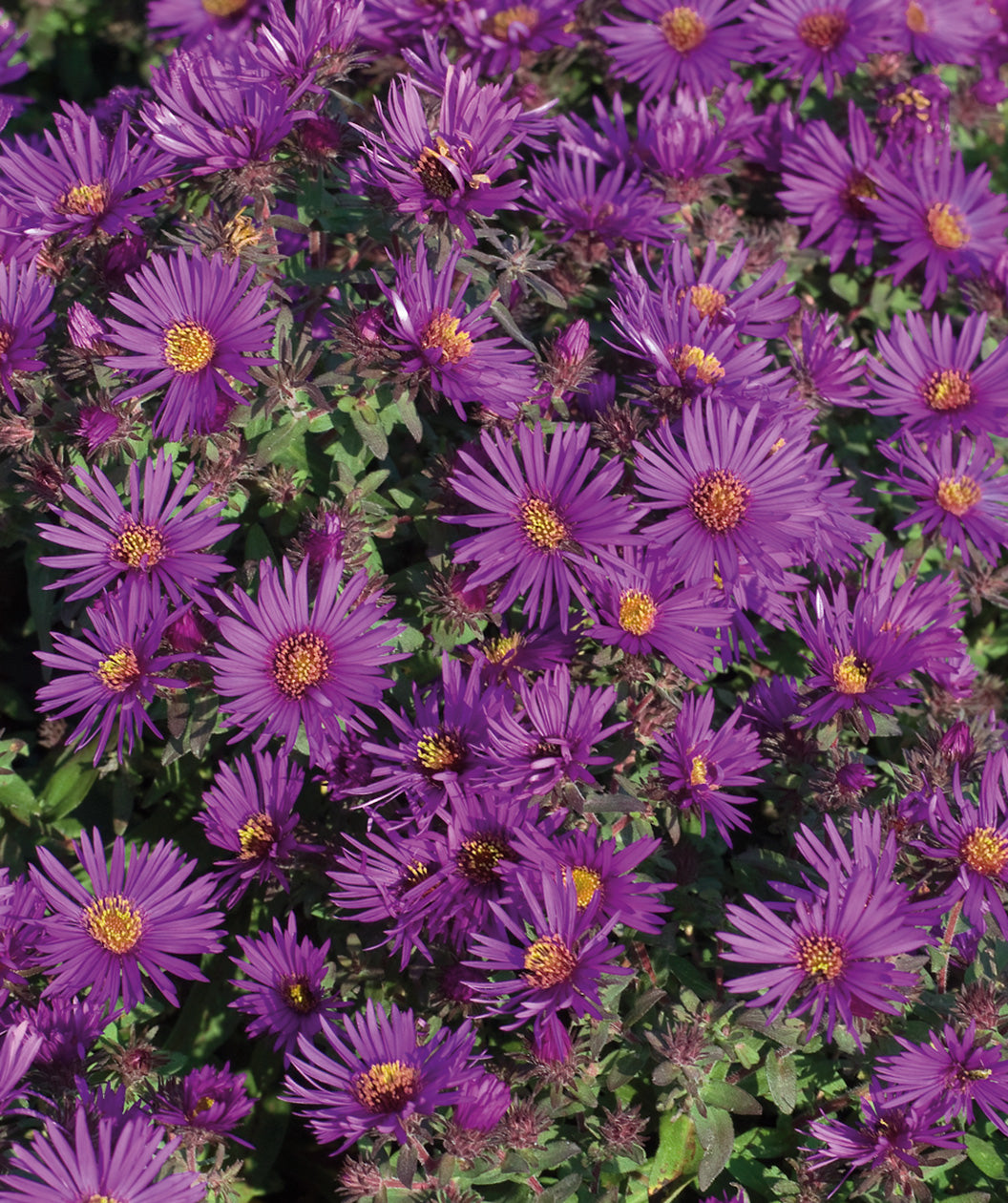DEEP PURPLE AND FRILLY BLOOMS THAT SPARKLE IN LATE SUMMER
FEATURES:
- From mid-summer to late fall, bright purple blooms color your landscape
- Dark green, glossy foliage provides a stunning backdrop to the flowers
- Blooms attract birds, butterflies, and other pollinators
- Offers resistance to deer, rabbits, disease and other pests
- Best when used in cottage gardens, border plantings, butterfly gardens or along your walkway for a cheerful flower show
- Hand Selected, Fresh from the Grower
- Ships in a plant-safe designed box
Photo Credit: ©Nova-Photo-Graphik GmbH® Wood's Purple Aster
Growth Facts
- Hardiness Zone: 4-8
- Mature Height: 1-2' tall
- Mature Width: 1-2' wide
- Exposure: Full Sun/Part Shade
- Spacing: 1-2' apart
DEEP PURPLE AND FRILLY BLOOMS THAT SPARKLE IN LATE SUMMER
FEATURES:
- From mid-summer to late fall, bright purple blooms color your landscape
- Dark green, glossy foliage provides a stunning backdrop to the flowers
- Blooms attract birds, butterflies, and other pollinators
- Offers resistance to deer, rabbits, disease and other pests
- Best when used in cottage gardens, border plantings, butterfly gardens or along your walkway for a cheerful flower show
- Hand Selected, Fresh from the Grower
- Ships in a plant-safe designed box
Photo Credit: ©Nova-Photo-Graphik GmbH® Wood's Purple Aster
Growth Facts
- Hardiness Zone: 4-8
- Mature Height: 1-2' tall
- Mature Width: 1-2' wide
- Exposure: Full Sun/Part Shade
- Spacing: 1-2' apart
Why plant Wood's Purple Aster?
As summer heat begins to tire the blooms in your landscape, consider adding the Woods Purple Aster to pick up where the other blooms are dropping off! This dwarf Aster offers dark green foliage topped with violet to purple blooms and cheerful yellow centers that appear later in the season. With the Woods Purple Aster’s dense mounding growth habit, this perennial is relatively low maintenance, while giving you the ability to add color to even the smallest of spaces!
How to use Wood's Purple Aster in the landscape?
Aside from the heavenly purple blooms that arrive later in the season, the Woods Purple Aster is a haven of food and shelter to birds and late season pollinators alike! The Woods Purple Aster also offers the ability to thrive when planted via containers, opening up a multitude of locations to display this budding bloomer. Planted in curated gardens such as butterfly or cottage, or used in mass plantings, generating fields of feasts for the birds and plenty to pollinate, the choice is yours!
Planting Zones
Hardiness Zone: 4-8
How To Plant Wood's Purple Aster
When introducing the Woods Aster Purple to your property we recommend finding locations that provide full sun, however these plants are capable of handling some light shade. Thriving best in moist, well-draining soils, the Woods Purple Aster can handle sites consisting of chalk, clay, loam, and even sandy areas. For the health of the Woods Purple Aster, planting in a location that allows good air circulation will help avoid ailments like powdery mildew.
How To Water
After planting, you should water your Woods Aster Purple at a minimum of twice a week until established. Once established, keep an eye on the soil making sure not to let it get too dry as these plants like it moist but not saturated. We recommend keeping an eye on your local weather making sure to water during periods of inclement weather such as high heat or drought.
How To Fertilize
When first planting your Woods Aster Purple, we recommend adding fertilizer to the planting site. If you planted during the spring, re-apply fertilizer in late fall before winter dormancy. If you planted in fall, wait until spring before the push of new growth to fertilize your perennial. Remember these steps for the life of the plant and you will continue to have lavish blooms each year!
How To Prune
There are a few different methods for pruning your Woods Purple Aster; they are thinning, pinching, and pruning. Thinning is the process of cutting out entire stems from the base. One in three stems should be removed to promote proper air flow and to alleviate the possibilities of contracting powdery mildew. Pinching is the process of literally pinching the stalks of the perennial just above the new growing bud to promote more growth. The goal when pinching is to maximize the amount of blooms possible in a season. Lastly, when the plant has fallen into dormancy, you may, if needed to reshape your Woods Purple Aster, prune to the ground leaving about 2” of the plant in order for new growth to form.





